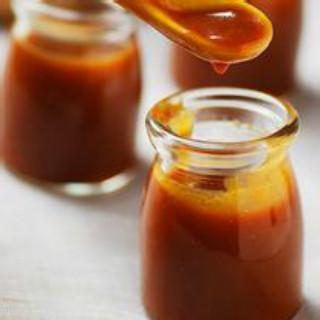Caramel color is not so terrible, I am a caramel color!

Today is a small year, which means that the arrival of the Year of the Monkey is about to be ushered in. In this traditional festival, every family inevitably has to make a big meal. Meat cold dishes are essential, such as sauce beef, sauce pig's trotters, pig ears and other sauce brine products. Many people think it is troublesome to do, and the variety of sauce and brine products in the supermarket are discouraging: it is full of additives, you see that color, there must be caramel color, and sodium nitrite or something, eating it is definitely not good for the body!
In recent years, there have been more and more negative reports about food additives, and people have misunderstood food additives, blindly rejecting and criticizing, including caramel color. In fact, the caramel color is not as terrible as it sounds.
What is caramel color?
Caramel, also known as caramel color, commonly known as sauce color, is mainly used for fermentation condiments such as soy sauce and vinegar, as well as the coloring of candy, beer, etc. Qualified caramel color is a very stable, hygienic natural colorant, is an important member of food additives, and has a wide range of applications in food.
The reason why caramel color is carcinogenic is because in the production process of caramel color, a substance called 4-methylimidazolium is generated. Experimental studies have shown that high doses of 4-methylimidazole, although they cause cancer in mice, are not all. Moreover, this result cannot be applied directly to the human body.
After a series of in-depth studies and experiments, the Food and Agriculture Organization of the United Nations (FAO), the World Health Organization (WHO), and the International Committee of Experts on Food Additives (JECFA) all consider caramel color to be safe as an food color, but limit the amount of 4-methylimidazole is prescribed [1]. China has also formulated double standards for the use of caramel pigments gb 8817 "caramel color for food additives" and gb 2760-2014 "standards for the use of food additives", so if caramel color is used in accordance with national regulations, there is no problem.
Caramel color in which products?
1. Caramel color is widely used in soy sauce, vinegar, cooking wine and other flavored varieties to improve its color and quality. In recent years, there have been many calls about the caramel-colored soy sauce causing cancer, but it cannot kill the soy sauce with a stick. Due to the uneven selection and production process of raw materials for caramel color in China, coupled with the fact that some manufacturers do not produce in accordance with national regulations, unqualified caramel color is prevalent in the market, bringing hidden dangers to human health. If you choose qualified soy sauce produced by regular manufacturers when purchasing, the problem is not big.
2. Cola, whiskey, brandy, beer and malt drinks, etc. In 2012, the "cola caramel color carcinogenicity" incident triggered people's attention to caramel color. Caramel color in the food added too much, will affect the taste, for the sake of product quality, manufacturers will not arbitrarily add. In addition, small doses of caramel color are safer, and the U.S. Food and Drug Administration says that unless you drink 1,000 bottles of listening cola a day, it will cause cancer.
3. Used in the production of bread, desserts, ice cream, etc., it can improve the uneven coloring of baked goods such as bread and increase flavor.
4. Used in sauce and brine products, however, according to the "Food Additives Use Standards", the scope of application of caramel color produced by ammonia does not include sauce brine meat products and soy products. Therefore, when purchasing such products, special attention should be paid to whether the food additives in the ingredient list contain caramel color. The following is the ingredient list of sauce and brine products I photographed in the supermarket, generally the product ingredient list produced by conventional manufacturers, there is no caramel color in food additives, and it is marinated with soy sauce or brewed soy sauce, so don't worry too much.
In short, caramel color is not as terrible as we think, as long as it is added within the scope of national standards, it is relatively safe. However, for the above types of food, we should eat limited amounts in daily life. Soy sauce and other condiments and sauce and brine products contain salt, which invisibly increases the intake of salt; cola and other beverages have a high sugar content, and the sugar content of a bottle of cola is equivalent to about 16 sugar cubes; bread, desserts, ice cream and other high calories are high, and in the production process, cream, refined sugar and other high-fat and high-sugar ingredients are added, and excessive consumption will bring health risks.
bibliography:
[Wang Fengyun, Peng Yunlong, Lv Jin'an, et al., Caramel Pigment and Food Safety[j], Chemistry Education, 2013(7):1-3,5.
Original/Author: Nutritionist Dong Fan
National Public Dietitian
Lecturer at Beijing Dietitians Club
Senior member of the Capital Society of Health, Nutrition and Gastronomy
This article is the author's original, if you need to reprint, please contact the author himself
Sina Blog: Dietitian Dong Fan
qq:895979902
WeChat: Food nutritionist Dong Fan